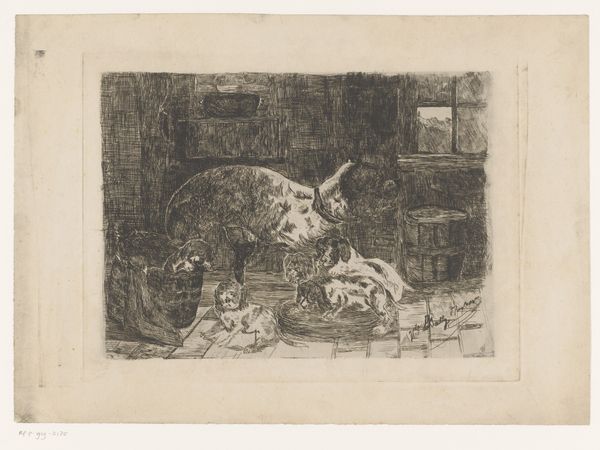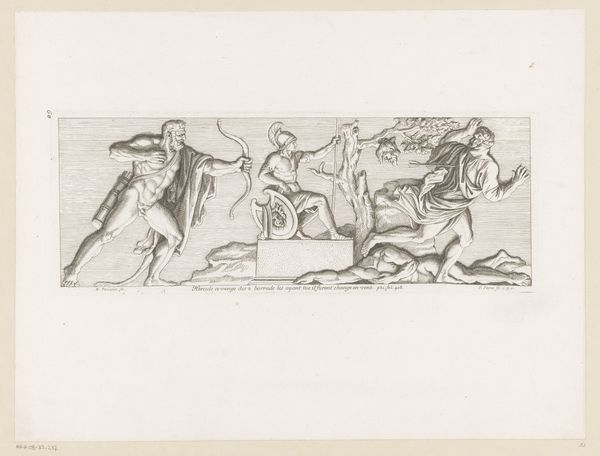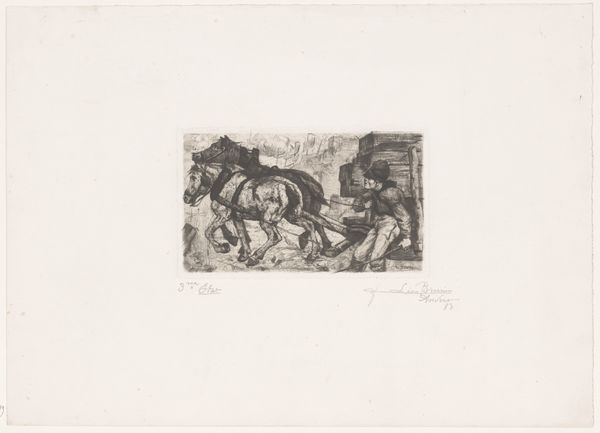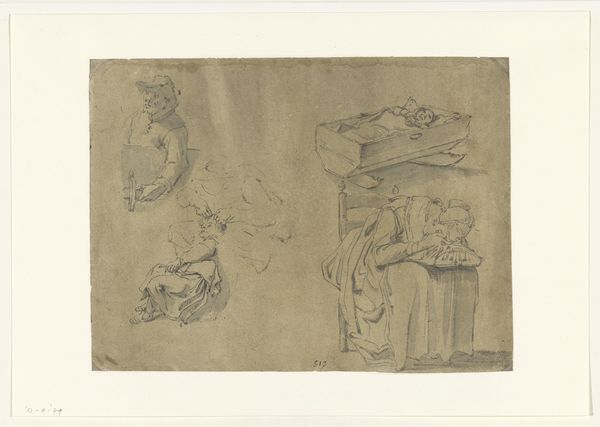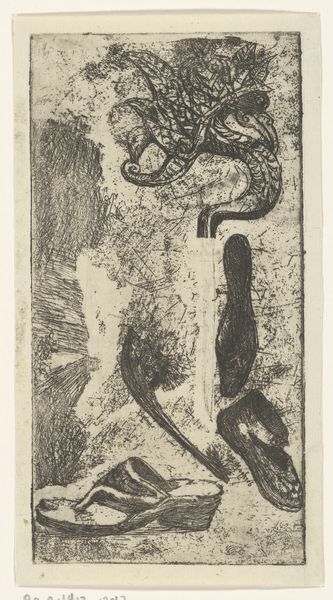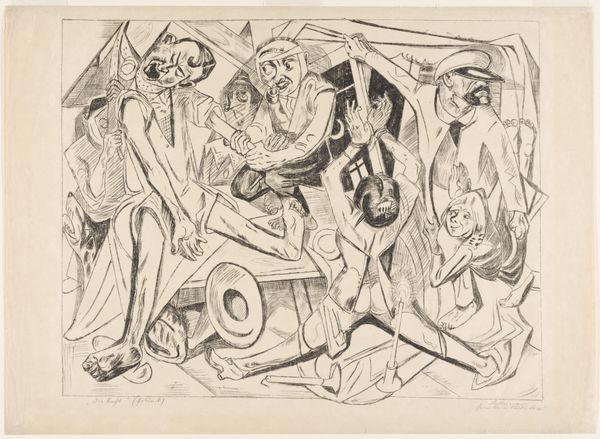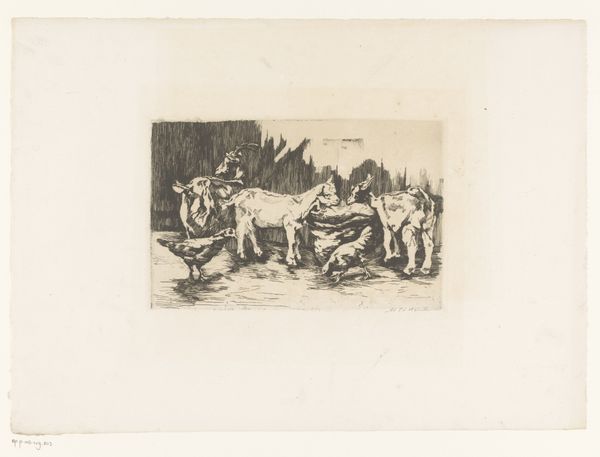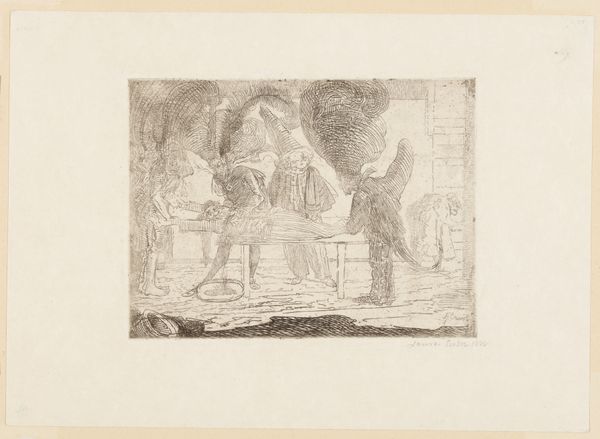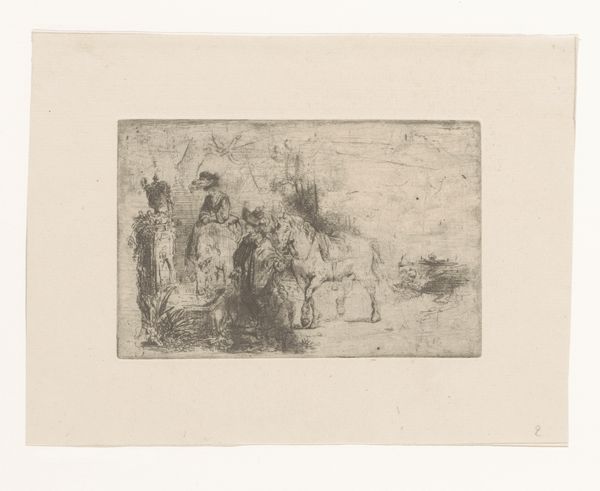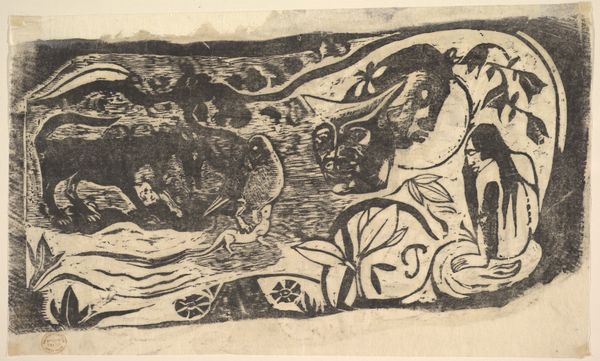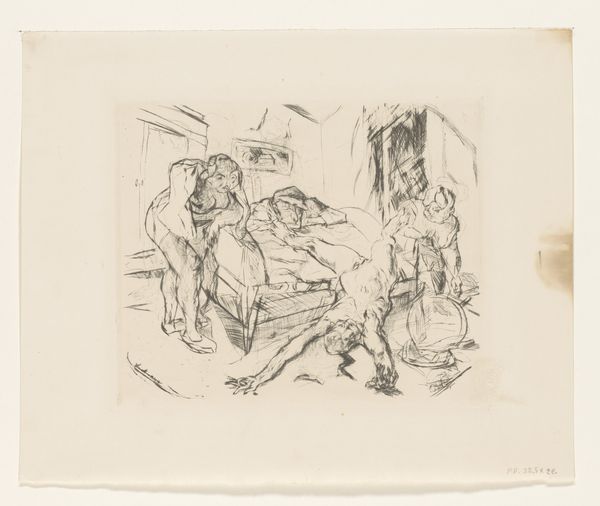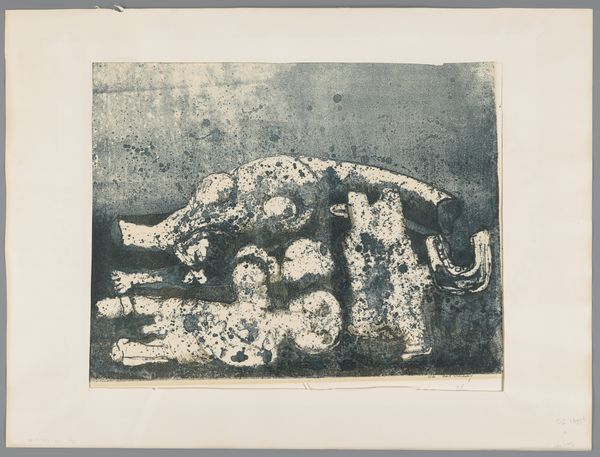
Sandalen, een dode muis, een chimère, boegbeeld van een schip en een boerderij 1867 - 1890
0:00
0:00
drawing, print, ink
#
drawing
#
dutch-golden-age
# print
#
pen sketch
#
ink
#
symbolism
Dimensions: height 169 mm, width 290 mm
Copyright: Rijks Museum: Open Domain
Curator: So, this bizarre print at the Rijksmuseum is entitled "Sandals, a dead mouse, a chimera, ship's figurehead and a farmhouse." Quite a mouthful! It’s by Philip Zilcken, made sometime between 1867 and 1890. Editor: Right, a fascinating jumble. My initial take? Pure symbolic chaos. The monochromatic palette amplifies this dreamlike or nightmarish feeling—a cabinet of curiosities gone awry. Curator: Well, it's ink on paper, and Zilcken clearly embraces symbolism here. Look at the odd collection of objects: mundane sandals juxtaposed with the bizarre chimera and... yes, a dead mouse. What could it all signify? Editor: The sandals, perhaps a symbol of everyday life, almost grounding the composition despite the strangeness of the other objects. Yet even they're arranged with deliberate unease, almost... discarded. Is the artist making a statement about the transience of life? The inevitability of decay as embodied by that poor mouse? Curator: It could very well be that! Zilcken plays with composition, but without traditional perspective, almost as though everything occupies the same plane. Is this stream-of-consciousness expressed through imagery? Editor: Precisely. Notice how the hard lines of the ship's figurehead contrast against the blurred, sketch-like rendition of what you call the farmhouse. Opposites coexisting and clashing—clarity and ambiguity, life and death. Semiotically loaded, no? Curator: Undoubtedly. It's Dutch Golden Age style filtered through a strange, personal lens. You know, it’s hard to put my finger on it exactly, but there’s this unsettling atmosphere, a touch of melancholic absurdity to the entire scene, that is signature Zilcken. Editor: Ultimately, I find it rather compelling. The piece's lack of resolution—literally and figuratively— invites deeper reflection on the very act of collecting and meaning-making. We’re left questioning how we order the world, or perhaps, if order is even possible. Curator: I like your take, questioning order! As an artist, I find its raw quality strangely appealing, almost daring the viewer to come up with their narrative. Editor: And with such an abundance of narrative paths and conflicting signals— the dead mouse—you can't help but feel the weight of its emotional impact. A potent work, even after all this time.
Comments
No comments
Be the first to comment and join the conversation on the ultimate creative platform.
